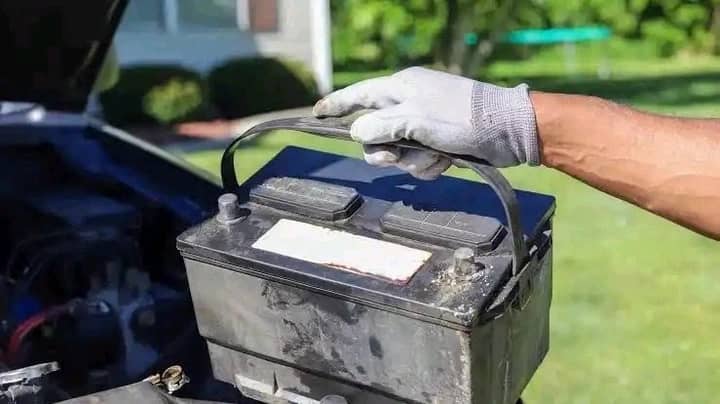By Bada Abraham
Dealing with a dead car battery can be a frustrating experience, especially when it happens unexpectedly. However, understanding what to do when your car battery runs down can help you navigate the situation calmly and efficiently. In this article which is in accordance to healthline, we will explore a variety of steps you can take to address a dead car battery. By following these proactive measures, you can safely get back on the road without any major setbacks.
1. Identify the Signs of a Dead Battery:
Before taking any action, it’s important to confirm that your car battery is indeed dead. Typical signs of a dead battery include dimmed headlights, a clicking sound when you try to start the car, sluggish or non-responsive electrical systems, and the engine refusing to turn over. If you experience any of these warning signs, there is a high probability that your car battery needs attention.
2. Safety Measures:
When dealing with a dead car battery, safety should always be a priority. Park your vehicle in a safe location, away from oncoming traffic and with ample space to work around the car. Engage the emergency brake and turn on your hazard lights to alert other drivers to your presence. Additionally, avoid smoking or using open flames near the battery as it generates a mix of hydrogen and oxygen gases, which can prove highly flammable.
3. Jump-Start Your Vehicle:
One common solution for a dead car battery is jump-starting the vehicle. This method involves using another vehicle with a properly functioning battery to transfer power to your car. Before jump-starting, ensure that both vehicles are turned off, and their ignition keys are removed. Locate the battery terminals – the positive (red) and negative (black) cables. Connect the positive ends of the cables to the positive terminals of each battery, then connect the negative end of the cable to the negative terminal on the live battery and a metal ground point on the dead battery’s vehicle.
Once connected, start the vehicle with the live battery and let it run for a few minutes to charge the dead battery. Then, try starting your own vehicle. If successful, keep both vehicles running for a while to allow the alternator to charge the battery fully.
4. Use a Portable Jump Starter:
An alternative to relying on another vehicle is to use a portable jump starter or a power pack specifically designed to jump-start a car. These portable devices are compact and easy to use. Connect the cables from the portable jump starter to your dead battery following the instructions provided. Once properly connected, start your vehicle following the regular procedure. These portable jump starters often have additional features like USB ports to charge electronic devices in emergency situations.
5. Call for Roadside Assistance:
If you are unable to jump-start your vehicle or don’t feel comfortable doing so, calling for roadside assistance is a reliable option. Many insurance providers offer roadside assistance as part of their coverage or for an additional fee. Roadside assistance professionals have experience with dead batteries and can efficiently jump-start your vehicle or provide a towing service if needed. They also have the necessary tools and expertise to handle various other car-related issues.
6. Replace the Battery:
In some cases, jump-starting the vehicle may be a temporary solution, and the battery may require replacement. If your car battery is aging, damaged, or weak, it may not hold a charge effectively. Head to an auto parts store or a service center specializing in batteries and have them test the battery’s condition. If recommended, purchase a new battery suitable for your vehicle’s make and model. Replace the old battery following the instructions provided in the vehicle’s manual or seek professional assistance if necessary.
7. Preventative Measures for Future Battery Issues:
To prevent future instances of a dead car battery, consider following these preventative measures:
a. Regular Maintenance: Schedule regular maintenance checks for your vehicle, including battery inspections. This ensures early detection of any potential issues and allows for preventive measures to be taken.
b. Limit Excessive Electronics: Avoid overusing electrical devices, such as headlights, air conditioning, or the radio, when the engine is not running. Leaving these devices on can drain the battery faster.
c. Short Trips: If possible, avoid regular short trips as they may not provide sufficient time for the battery to fully recharge. Combining multiple errands into one trip can help maintain a healthy battery charge.
d. Disconnect Battery: If your vehicle will be parked for an extended period, consider disconnecting the battery. This prevents any electrical drain on the battery from components like alarm systems or clocks.
e. Clean Connections: Routinely inspect and clean the battery terminals to remove any corrosion. Dirty or corroded connections can hinder battery performance.











Leave a Reply